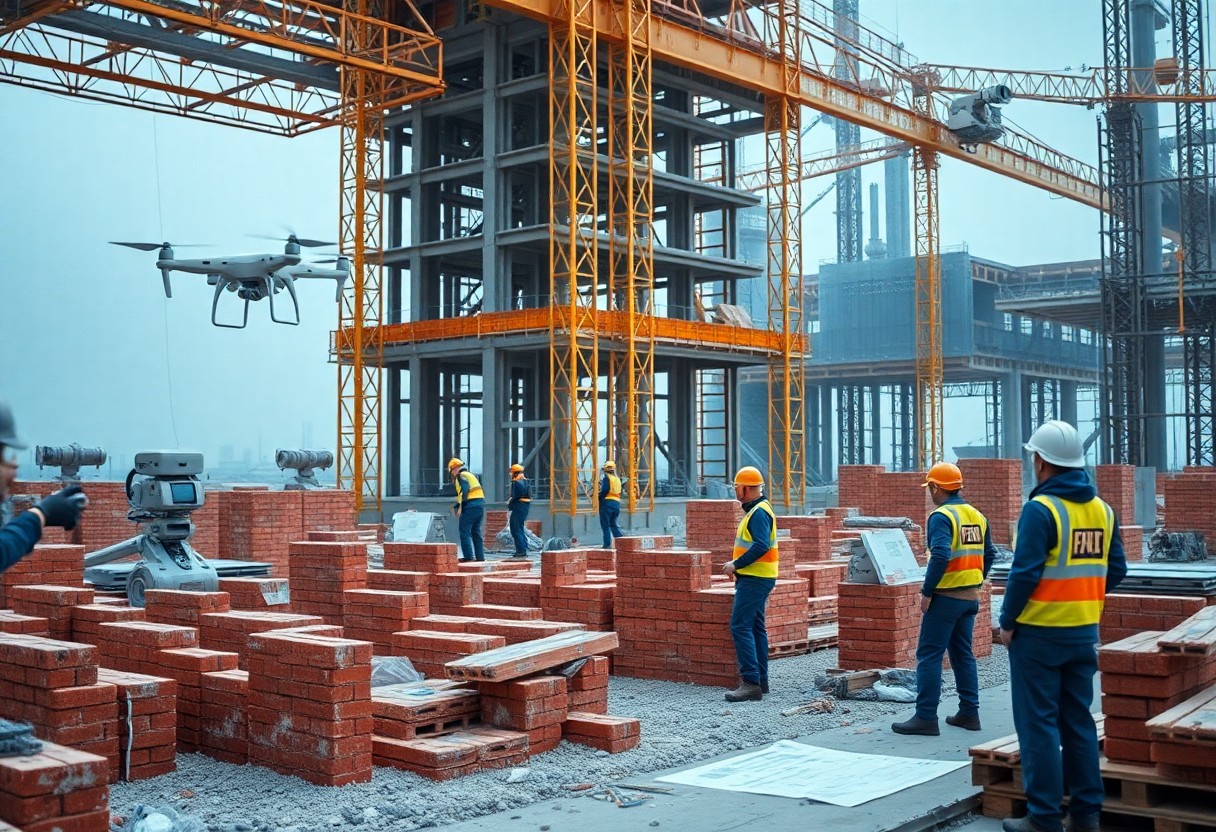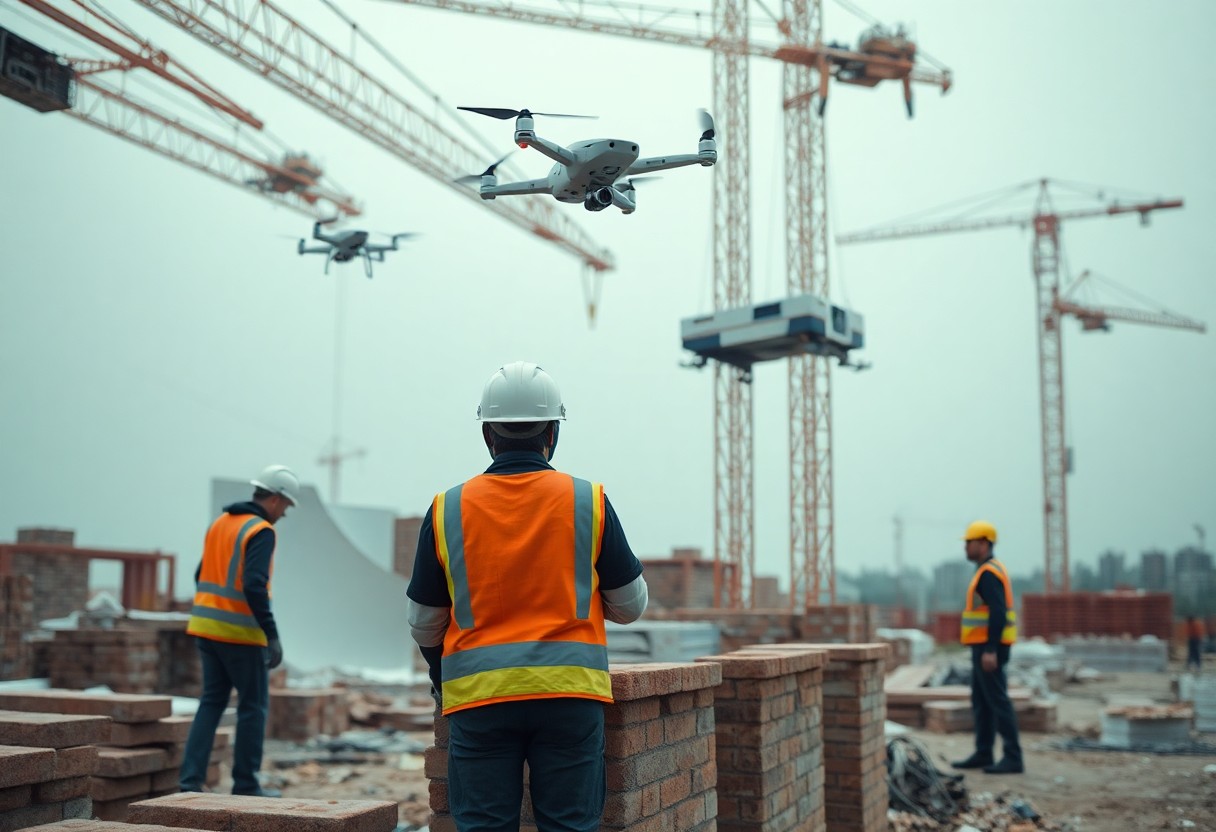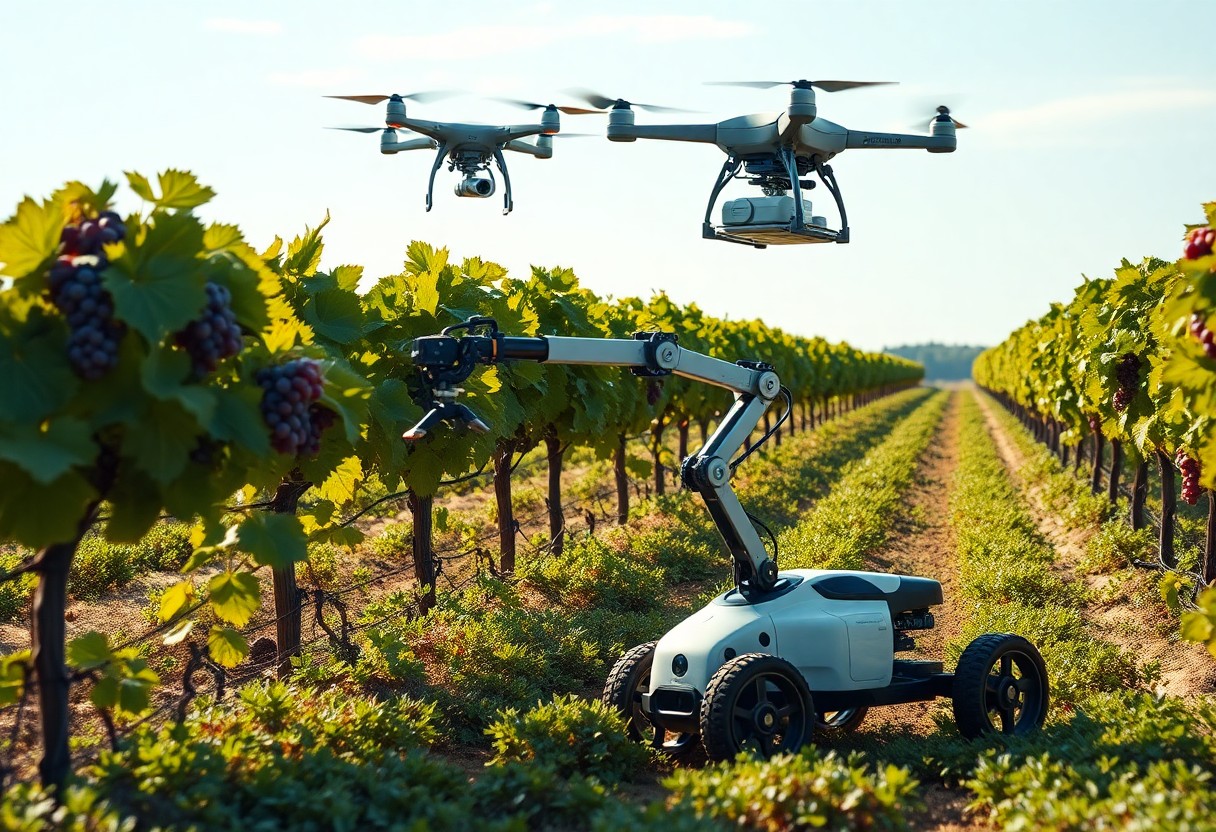Most construction professionals are beginning to recognize the transformative role robotics plays in enhancing efficiency and safety on job sites. By integrating robotic technologies into your workflows, you can streamline tasks such as bricklaying, demolition, and material transport. These innovations not only reduce labor costs but also minimize human errors, allowing your team to focus on more complex aspects of projects. As you navigate this evolving landscape, understanding robotics’ impact will be key to maintaining competitiveness and leveraging new opportunities in the construction sector.
Automated Labor: The New Workforce
Robotics Redefining Jobs on Site
Robotics is fundamentally changing the roles on construction sites, where automated machines are now performing tasks traditionally handled by humans. These robots excel in repetitive and dangerous jobs, like bricklaying or demolition, resulting in increased efficiency and reduced injury rates. For instance, companies deploying robotic systems can see productivity boosts of up to 30%, allowing human workers to focus on more complex tasks that require critical thinking and creativity.
Balancing Human and Robot Collaboration
Effective collaboration between humans and robots is necessary for maximizing the benefits of automation in construction. Combining human intuition with the precision of robotics can improve project outcomes while ensuring safety. As skilled workers adapt to overseeing robotic functions, they can leverage advanced technology to enhance productivity, resulting in a more harmonious workplace that values both innovation and human capabilities.
Finding the right balance means integrating robotics into daily operations while still valuing the human touch that machines cannot replicate. For example, while a robotic arm may handle repetitive tasks like pouring concrete, human workers are necessary for decision-making and addressing unexpected challenges. This synergy not only boosts output but also fosters a culture where skilled labor and cutting-edge technology coexist, enhancing problem-solving and creativity on site. Workforce training programs are vital in preparing your team to manage and collaborate with machines, ensuring a smooth transition to an automated future.
Precision Engineering: The Impact of Robotics on Design
You can observe dramatic advancements in design efficiency through robotics in construction. These technologies enable the creation of complex structures that were once impossible or cost-prohibitive. Robotic systems facilitate precise measurements and adjustments, ensuring your designs translate seamlessly from concept to physical reality. With automated processes, design iterations occur rapidly, enhancing your ability to innovate without the typical constraints of traditional methods.
Enhancing Accuracy Through Advanced Manufacturing
Advanced manufacturing techniques powered by robotics significantly enhance accuracy in construction projects. Automation minimizes human error, allowing for components to be fabricated with precise tolerances. This consistency not only improves the structural integrity of your builds but also reduces material waste, leading to cost savings and more sustainable practices.
Key Benefits of Enhanced Accuracy in Construction
| Improved Structural Integrity | Reduces the likelihood of design flaws and failures. |
| Material Waste Reduction | Optimizes resource use and helps in cost management. |
| Design Flexibility | Allows for rapid prototyping and iterative design processes. |
| Shorter Project Timelines | Streamlines workflows, facilitating quicker project completion. |
The Role of 3D Printing in Robotics and Construction
3D printing revolutionizes construction, enabling you to create customized components with remarkable efficiency. This integration with robotics allows for on-site printing, reducing transportation costs and time delays associated with sourcing materials. You can produce, reinforce, and repair structures with unique geometries, enhancing not only aesthetic appeal but also functional performance.
The convergence of robotics and 3D printing is reshaping construction practices. By employing 3D printing techniques, complex structures can be fabricated layer by layer, offering you unprecedented design freedom. For instance, large-scale printers can produce entire building components, reducing assembly time significantly. Innovative projects like the 3D-printed houses in Amsterdam exemplify how this technology can address housing shortages globally, while minimizing material waste and energy consumption. As the technology matures, expect even more revolutionary applications that further streamline construction processes and enhance architectural possibilities.
Safety First: How Robotics Minimizes On-Site Risks
Robotics significantly enhances safety on construction sites by reducing human exposure to hazardous environments. With the integration of autonomous machines capable of performing heavy lifting and repetitive tasks, you can minimize the risk of accidents and injuries. This shift not only protects workers but also ensures compliance with safety regulations, fostering a culture of well-being within the industry.
Mitigating Hazards with Drones and Automated Machinery
Drones and automated machinery play a vital role in identifying and mitigating hazards on construction sites. Utilizing drones for aerial inspections allows you to detect structural issues and monitor site conditions without putting personnel at risk. Automated machinery, programmed to perform specific tasks, can operate in dangerous zones, ensuring that workers remain safely out of harm’s way.
The Influence of Robotics on Worker Safety Protocols
Robotics is transforming worker safety protocols by encouraging the adoption of advanced technologies and methodologies. With robotic systems taking over dangerous tasks, you may find that traditional safety measures evolve to incorporate real-time data analysis and predictive modeling. This shift not only enhances adherence to safety standards but also enables you to proactively address risks based on identified patterns.
The integration of robotics in safety protocols fosters a data-driven approach. For example, utilizing wearable technology that connects with robotic systems can monitor real-time health metrics of workers, alerting them and site managers to potential hazards before they escalate. This proactive stance allows for immediate intervention, reducing the likelihood of incidents and promoting a safer work environment. Adjusting protocol guidelines based on data from robotic systems not only enhances efficiency but reinforces a commitment to protecting your workforce.

Cost Efficiency and Project Timelines: A Robotic Perspective
Robotics is revolutionizing cost management and time efficiency in construction projects. With automated machinery performing tasks like bricklaying and concrete pouring, you can significantly reduce labor costs and minimize human error. These technologies not only speed up construction processes but also ensure consistent quality, leading to fewer delays and rework expenses. As a result, your projects are completed faster and on budget, creating a substantial competitive advantage in the market.
Streamlining Operations with Automation
Automation streamlines numerous aspects of construction operations, from planning to execution. By utilizing robotics, you eliminate repetitive tasks that often bog down workflow, allowing your team to focus on more critical components of the project. Drones, for example, can survey job sites quickly and accurately, enhancing data collection and site assessments without the usual delays associated with manual inspections.
Quantifying Time Savings in Construction Processes
Time savings achieved through robotics can be quantified with precise metrics, reflecting the technology’s impact on overall efficiency. By analyzing project timelines, you’ll find that tasks automated by robots can reduce time frames by as much as 50%. This not only accelerates project completion but also enhances the ability to take on additional work, ultimately boosting your revenue potential.
For instance, in a study comparing traditional and robotic construction methods, teams utilizing robotic technology completed installations in half the time, translating to savings upwards of 200 labor hours per project. Additionally, projects with robotic assistance often report a marked decrease in unforeseen delays due to improved precision and reliability of robotic systems. These insights demonstrate how timely evaluations of operations through robotic integration can lead to informed decision-making, enhancing project profitability and client satisfaction.
Sustainability Reimagined: Robots in Eco-Friendly Building
Incorporating robotics into construction not only enhances efficiency but also significantly advances sustainability efforts. Robots are now integral in creating eco-friendly structures, using innovative techniques that minimize resource consumption and reduce environmental impact. From autonomous drones monitoring job sites to robotic arms prefabricating materials, their capabilities enable construction practices that support a greener future.
Energy-Efficient Practices Driven by Robotics
Energy consumption in construction is being drastically reduced through the implementation of robotics. Automated systems can optimize the use of energy during the construction process, ensuring that machinery operates efficiently and only when necessary. Robotics also facilitate the integration of renewable energy technologies, enabling the development of buildings that rely on solar or wind power.
Reducing Waste Through Automated Systems
Automated systems are transforming how waste is managed in construction projects. Robotics can accurately measure and cut materials, leading to a significant reduction in off-cuts and excess. By leveraging machine learning algorithms, these systems analyze project requirements and streamline material usage, minimizing waste and enhancing sustainability initiatives.
The advancement of robotic technology has introduced remarkable waste reduction techniques. For instance, robotic systems equipped with precision cutting tools ensure that materials are utilized to their fullest potential, reducing excess by as much as 30%. Additionally, data-driven analysis allows for just-in-time delivery of resources, further decreasing storage needs and waste accumulation. Incorporating robotic waste management systems can create a closed-loop process where materials are recycled and reused, aligning your projects with sustainable construction goals.
Final Words
With this in mind, you can see how robotics is transforming the construction industry by enhancing efficiency, safety, and precision. As you integrate these technologies into your projects, expect improved labor productivity and reduced costs. Embracing robotics not only streamlines processes but also helps you tackle labor shortages while delivering high-quality outcomes. The future of construction is not just about machines; it’s about working smarter and innovating your approach to building. Stay ahead by understanding and leveraging these advancements for your competitive advantage.







